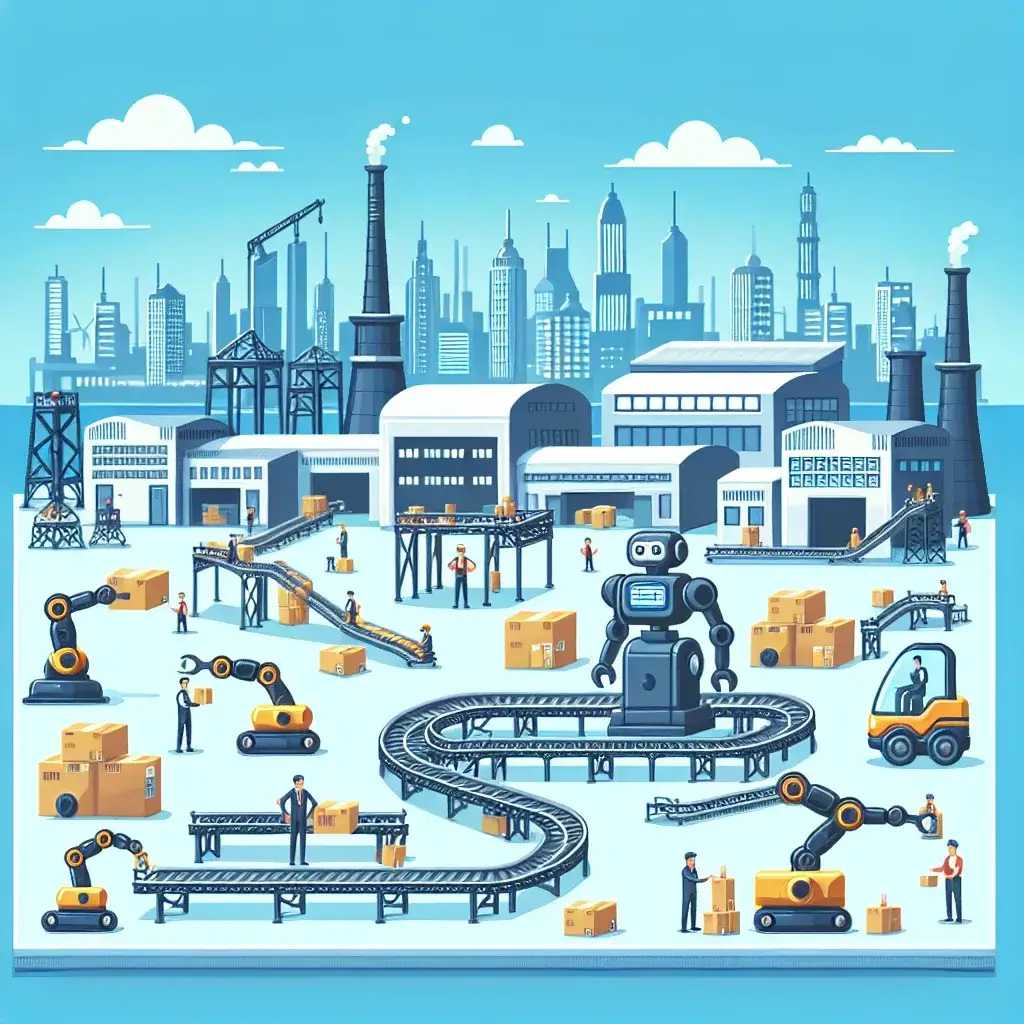Introduction
Tesla, the electric vehicle (EV) pioneer, is making significant advancements in supply chain management by implementing AI-powered automation in its U.S. Gigafactories. This article delves into how this innovative approach is reshaping the manufacturing landscape, improving operational efficiency, and setting new benchmarks in the automotive industry.
The Evolution of Tesla’s Supply Chain
Founded in 2003, Tesla has steadily evolved from a niche electric car manufacturer to a global leader in sustainable energy solutions. The company’s Gigafactories are a testament to its commitment to scaling up production while minimizing costs. However, the rapid growth also posed challenges in managing an intricate supply chain effectively.
Challenges in Traditional Supply Chain Management
- Complexity: The automotive supply chain involves numerous stakeholders, components, and logistics, making it inherently complex.
- Global Disruptions: Factors like pandemics and geopolitical tensions can disrupt the supply chain, leading to delays and increased costs.
- Demand Forecasting: Accurately predicting demand for electric vehicles is challenging, risking overproduction or shortages.
AI-Powered Automation: A Game Changer
To address these challenges, Tesla has turned to artificial intelligence (AI) and machine learning. By leveraging AI-powered automation, Tesla is enhancing its supply chain in several ways:
1. Predictive Analytics
AI algorithms analyze vast amounts of data, allowing Tesla to forecast demand more accurately. This capability ensures that production aligns with market needs, reducing waste and optimizing inventory levels.
2. Real-Time Monitoring
With AI, Tesla can monitor its supply chain in real-time, identifying bottlenecks and inefficiencies almost instantly. This proactive approach enables the company to make quick adjustments, minimizing downtime.
3. Robotics and Automation
Automated robots powered by AI are transforming the manufacturing floor. These robots can perform repetitive tasks with precision and speed, increasing productivity while reducing human error. Tesla’s Gigafactories are increasingly integrated with these advanced systems, enhancing assembly line efficiency.
4. Enhanced Logistics
AI-driven logistics solutions optimize transportation routes and schedules, ensuring timely delivery of components. This efficiency is crucial for maintaining a seamless production flow, especially as Tesla expands its global footprint.
Real-World Applications at Tesla Gigafactories
Tesla’s AI-driven supply chain automation is already yielding impressive results. Here’s a closer look at its implementation in various Gigafactories:
Gigafactory Nevada
At Tesla’s Gigafactory in Nevada, AI systems monitor energy consumption and production schedules to enhance efficiency. This factory primarily focuses on battery production, a vital component of Tesla’s vehicles. AI helps in predicting battery demand and optimizing the production process accordingly.
Gigafactory Texas
The Texas facility, which is set to produce the highly anticipated Cybertruck, utilizes AI for real-time inventory management. The system tracks parts availability and ensures that the assembly line is well-stocked, reducing the chances of production delays.
The Future of Supply Chain Automation
As Tesla continues to innovate, the future of supply chain automation looks promising. The integration of AI not only streamlines processes but also positions Tesla at the forefront of the automotive industry. Here are some future predictions:
1. Increased Efficiency
With continued advancements in AI technology, Tesla’s supply chain is expected to become even more efficient. Automation will likely lead to reduced production times and lower operational costs, enhancing profitability.
2. Sustainability Focus
Tesla’s commitment to sustainability will drive further innovations in supply chain management. AI can help optimize resource usage, reduce waste, and improve the overall carbon footprint of production.
3. Adaptability to Market Changes
As consumer preferences evolve, Tesla’s AI systems will allow for quick adaptations in production strategies. This flexibility will be crucial in maintaining a competitive edge in the rapidly changing automotive landscape.
Pros and Cons of AI in Supply Chain Management
While the advantages of AI-powered supply chain automation are clear, it’s essential to consider potential drawbacks:
Pros
- Enhanced Efficiency: Automation leads to faster production times and reduced costs.
- Improved Accuracy: AI minimizes human error in forecasting and production processes.
- Real-Time Insights: Continuous monitoring enables proactive decision-making.
Cons
- High Initial Investment: Implementing AI systems can be costly, requiring significant upfront capital.
- Job Displacement: Automation may lead to a reduction in certain job roles, raising concerns about employment.
- Dependence on Technology: Over-reliance on AI systems might lead to vulnerabilities in unforeseen circumstances.
Conclusion
Tesla’s pioneering efforts in AI-powered supply chain automation are setting a new standard in the automotive industry. By addressing challenges and leveraging innovative technology, Tesla is not only improving its operational efficiency but also paving the way for a more sustainable future. As the company forges ahead, the integration of AI into supply chain management will likely serve as a model for other industries aiming to enhance efficiency and productivity.




